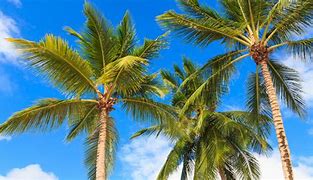A study found that over a thousand different species of palm trees are in danger of going extinct. Artificial intelligence was employed by scientists to evaluate the dangers posed by all members of the palm family, from big trees to climbing plants. The information provides a much clearer picture of how many, and which palm species are threatened. Millions of people rely on the enormous palm plant family for food, water, and shelter.

What really happened to Palm trees?
In addition to providing food and medication for hundreds of communities throughout the tropics, they also give building supplies for homes and tools. The study, which was published in Nature Ecology and Evolution, indicates that at least 185 palm species that are useful may be threatened in 92 places, underscoring the significance of protecting these plants.
Palm trees have a host of uses, including as staple crops such as coconut, palm oil or dates, or in the making of furniture, rubber, oil and ropes.
Scientists are concerned about extinction risks to lesser-known wild relatives of popular ornamental or commercially grown palms. They say wild plants are invaluable to local people but could vanish even before their full potential is known.

What is palm oil?
Palm oil is a type of edible vegetable oil derived from the flesh of the fruit of oil palms, primarily the African oil palm (Elaeis guineensis). Oil palms are native to West Africa, with many local farmers having cultivated them for centuries.
Palm fruits initially have pale pink or yellow flesh but turn red or orange when ripe. The colouring agent in red palm oil is beta carotene (a metabolite of Vitamin A), which is converted to vitamin A in the body. Unripe fruits contain high levels of antioxidants, but these disappear during processing. In addition to Vitamin A, red palm oil contains vitamin E and phytosterols.
The problem is that palm oil production has been rapidly increasing, leading to dramatic rises in deforestation, habitat loss, peat-land drainage and greenhouse gas emissions– with devastating consequences for the world’s wildlife and ecosystems. More than half of the world’s palm trees are now threatened by these trends. And it’s only going to get worse unless we put a stop to it once and for all.

Uses of palm oil
Palm oil is used in an astonishing number of products– from shampoo and toothpaste to ice cream and chips. There’s nothing natural about this ingredient found in over half of all packaged foods. Palm oil also devastates the world’s rainforests, depleting large swathes of biodiversity and threatening human health.
Palm oil is not only having an environmental impact: it has also been shown to negatively affect the nutritional values of food. From a dietary point of view, palm oil has been named by many as the worst type of fat you could consume because it promotes obesity and endangers your heart health.
Demand for the palm oil
The demand for palm oil is growing rapidly with more than 50% of consumers in Europe and North America stating that they are willing to pay more for sustainable products such as palm oil free from deforestation and human exploration.
What you can do:
- Learn how palm oil affects wildlife and ecosystems
- Educate yourself on the global deforestation crisis and spread the word.
Summary
According to Dr Rodrigo Cámara-Leret of the University of Zurich, who worked on the study, palms are the most recognizable plant category in the tropics and also one of the most beneficial. According to him, the study provides a far better understanding of how many and which palm species are endangered. Among all plant families, palms are among the most economically significant since millions of people throughout the world rely on hundreds of wild species.












